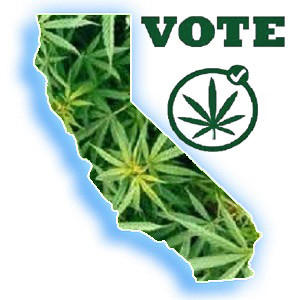Beginning with the decriminalization of small amounts of marijuana in California in the 1970s, the road to the legalization of non-medical marijuana use has been a rocky one. Perhaps the single most significant development in this road was the introduction of the Marijuana Control, Regulation, and Education Act by Tom Ammiano in February of 2009. The bill essentially lifted all existing penalties for the cultivation, transport, sale, and purchase of marijuana for individuals over 21 years of age. The bill also sought to lift penalties for the possession and use of marijuana, as well as natural THC products and associated paraphernalia.
Proponents of the Marijuana Control, Regulation, and Education Act
 Seeking to prohibit law enforcement authorities from enforcing marijuana laws as sanctioned by the federal government, the bill was also intended to help the state recover from the financial crisis it experienced from 2008 to 2010. This goal would be achieved by giving the state government the ability to tax the sale of marijuana at $50 an ounce. Proponents of the bill claimed that these measures would generate revenues of as much as $1.3 billion every year.
Seeking to prohibit law enforcement authorities from enforcing marijuana laws as sanctioned by the federal government, the bill was also intended to help the state recover from the financial crisis it experienced from 2008 to 2010. This goal would be achieved by giving the state government the ability to tax the sale of marijuana at $50 an ounce. Proponents of the bill claimed that these measures would generate revenues of as much as $1.3 billion every year.
Proponents of the bill also claim that the legalization of marijuana would help reduce crime associated with the illegal marijuana trade. By placing the revenues generated from the sale and taxation of marijuana into government coffers, there will be fewer funds available to the criminal organizations that have previously run the illegal marijuana industry. One proponent of the bill, Judge James Gray of the Orange County Superior Court, also claims that the money saved from doing away with marijuana-related arrests, prosecution, and incarceration in the wake of legalization would generate as much as $1 billion a year for the state coffers.
Criticisms of the Bill
The bill was not without its critics. One of the most vocal of these critics was John Lovell of the Peace Officers’ Association of California. According to Lovell, the bill would only worsen the current problems with alcohol and drug abuse, and that the legalization of marijuana would only encourage other people to take up the drug.
The Journey to Pass a Marijuana-Related Proposition
 In any case, the Marijuana Control, Regulation, and Education Act would crawl through the legal system until January 2010. This was the date when the bill was approved by the Assembly Public Safety Committee on the strength of a 4 to 3 vote. This event was the first time in U.S. history when a bill that effectively sought to legalize marijuana passed before a legislative body.
In any case, the Marijuana Control, Regulation, and Education Act would crawl through the legal system until January 2010. This was the date when the bill was approved by the Assembly Public Safety Committee on the strength of a 4 to 3 vote. This event was the first time in U.S. history when a bill that effectively sought to legalize marijuana passed before a legislative body.
The bill later failed to make it before the Health Committee, which is a requirement for it to be considered on the Assembly floor in time for the January deadline for proposed legislation proposed for passage in 2009. Ammiano announced plans to re-introduce the bill depending on how ballots for legalization performed in November 2010.
There were actually three different marijuana-related measures proposed for the November 2010 elections, but two of these were not able to draw the requisite number of signatures for passage. Proposition 19 (also called the Regulate, Control and Tax Cannabis Act) was approved for the November ballot in March 2010. However, this measure failed to make it through the November election.
 California Marijuana Market Breaking "Marijuana News" from CA
California Marijuana Market Breaking "Marijuana News" from CA
